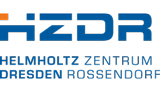Department of Surface Processes
The why? The how? The what?
The ultimate goal of our research, driven by scientific curiosity, is to gain fundamental and independent knowledge of the (geo)chemistry and environmental fate of long-lived radionuclides (RNs). One prominent and socially important application is the safe disposal of radioactive waste, to aid future generations in the responsibility of dealing with “our” legacy from energy production in nuclear reactors.
For this purpose we provide the radiochemical knowledge, namely structural and mechanistic data of important mobilizing and immobilizing reactions of RNs in solution, at interfaces, and in solids.
Our particular focus is using a variety of established and advanced microscopic and spectroscopic techniques, to accurately describe complex formation reactions and complex structures that govern RN interactions in the geosphere. In addition, we investigate the creation and chemical speciation of activation products in materials from nuclear power plants in the context of their safe decommissioning.
As part of a value chain, the derived structural information forms a sound basis for a reliable thermodynamic description of the investigated systems, which can be integrated in thermodynamic databases. The thermodynamic work is done in close collaboration with the department of Actinide thermodynamics.
Our core competencies
- Chemistry of long-lived RNs – Expertise in handling RNs, ranging from fission- and activation products to transuranium elements, and access to radiation safety labs.
- Structural characterization – Expertise in applying and coupling spectroscopic and microscopic as well as diffraction techniques for accessing molecular information.
- Thermodynamic description of RN complexes – Using macroscopic, spectroscopic, and calorimetric information of reactant-water-surface phenomena as basis for the derivation of surface complexation models and their thermodynamic parameters.
Research fields
- Coordination chemistry of RNs in aqueous solution and in human artificial biofluids, e.g. RADEKOR project.
- Molecular characterization of RN reactions at natural and engineered mineral-water interfaces, e.g. REDOX project.
- Incorporation of actinides and lanthanides in solid phases, e.g. AcE project.
- Environmental technetium chemistry., e.g. Young Investigator Group TecRad.
- Development of a method for pre-activity and dose rate calculations of components in the reactor vicinity based on neutron fluence distributions (EMPRADO) 12/2018 –03/2024, BMBF.
Latest Publication
Effect of Ba(II), Eu(III), and U(VI) on rat NRK-52E and human HEK-293 kidney cells in vitro
Senwitz, C.; Butscher, D.; Holtmann, L.; Vogel, M.; Steudtner, R.; Drobot, B.; Stumpf, T.; Barkleit, A.; Heller, A.
Abstract
Heavy metals pose a potential health risk to humans when they enter the organism. Renal excretion is one of the elimination pathways and, therefore, investigations with kidney cells are of particular interest. In the present study, the effects of Ba(II), Eu(III), and U(VI) on rat and human renal cells were investigated in vitro. A combination of microscopic, biochemical, analytical, and spectroscopic methods was used to assess cell viability, cell death mechanisms, and intracellular metal uptake of exposed cells as well as metal speciation in cell culture medium and inside cells.
For Eu(III) and U(VI), cytotoxicity and intracellular uptake are positively correlated and depend on concentration and exposure time. An enhanced apoptosis occurs upon Eu(III) exposure whereas U(VI) exposure leads to enhanced apoptosis and (secondary) necrosis. In contrast to that, Ba(II) exhibits no cytotoxic effect at all and its intracellular uptake is time-independently very low. In general, both cell lines give similar results with rat cells being more sensitive than human cells.
The dominant binding motifs of Eu(III) in cell culture medium as well as cell suspensions are (organo-) phosphate groups. Additionally, a protein complex is formed in medium at low Eu(III) concentration. In contrast, U(VI) forms a carbonate complex in cell culture medium as well as each one phosphate and carbonate complex in cell suspensions. Using chemical microscopy, Eu(III) was localized in granular, vesicular compartments near the nucleus and the intracellular Eu(III) species equals the one in cell suspensions.
Overall, this study contributes to a better understanding of the interactions of Ba(II), Eu(III), and U(VI) on a cellular and molecular level. Since Ba(II) and Eu(III) serve as inactive analogs of the radioactive Ra(II) and Am(III)/Cm(III), the results of this study are also of importance for the health risk assessment of these radionuclides.
Keywords: Cytotoxicity; Radionuclides; Kidney cells; Heavy metal speciation; TRLFS; Chemical microscopy
-
 Science of the Total Environment 923(2024), 171374-171394
Science of the Total Environment 923(2024), 171374-171394
DOI: 10.1016/j.scitotenv.2024.171374
Permalink: https://www.hzdr.de/publications/Publ-38876
A list of publications can be found here.
Research groups
Currently running third-party funded projects
- Experimentally supported calculations of neutron fields and the resulting activities in spaces far from the reactor (EBENE) 04/2024 – 09/2027, BMBF
- Interactions of technetium with microorganisms, metabolites and at the mineral-water interface – Radioecological considerations (TecRad) 07/2022 – 06/2027, BMBF
- Redox reactivity of selenium in environmental geomedia (REDOX) 06/2022 – 05/2025, ANDRA
- Speciation and transfer of radionuclides in the human organism especially taking into account decorporation agents (RADEKOR) 07/2020 – 12/2023, BMBF.
- Fundamental investigations of actinide immobilization by incorporation into solid phases relevant for final disposal (AcE) 01/2021 – 12/2023, BMBF.
An overview of finished projects can be found here.
Team
Head | |||||
| Name | Bld./Office | +49 351 260 | |||
|---|---|---|---|---|---|
| Dr. Katharina Müller | 801/P248 | 2439 | k.mueller | ||
Employees | |||||
| Name | Bld./Office | +49 351 260 | |||
| Daniel Butscher | 801/P352 | 3154 | d.butscher | ||
| Aline Chlupka | 801/P203 | 3198 2518 2523 | a.chlupka | ||
| Sebastian Friedrich | 801/P352 | 3154 | s.friedrich | ||
| Dr. Norbert Jordan | 801/P218 | 2148 | n.jordan | ||
| Stephan Weiß | 801/P316 | 2758 2523 | s.weiss | ||
| Maud Emilie Zilbermann | m.zilbermann | ||||
Incorporation in solid phases | |||||
| Name | Bld./Office | +49 351 260 | |||
| Dr. Astrid Barkleit | 801/P207 | 3136 2512 2518 | a.barkleit | ||
"TecRad" Wechselwirkung von Technetium mit Mikroorganismen, Metaboliten und an Mineral-Wasser-Grenzflächen - Radioökologische Betrachtungen | |||||
| Name | Bld./Office | +49 351 260 | |||
| Dr. Natalia Mayordomo Herranz | 801/P252 | 2076 | n.mayordomo-herranz | ||
| Caroline Börner | 801/P254 | 2251 | c.boerner | ||
| Arkadz Bureika | 801/P201 | 2434 | a.bureika | ||
| Irene Cardaio | 801/P254 | 2251 | i.cardaio | ||
| Vijay Kumar Saini | 801/P352 | 3328 | v.saini | ||
Alumni
| Name | at HZDR | Derzeitigte Institution |
|---|---|---|
| Isabelle Jessat | Ph.D. student | ASML, Veldhoven, Netherlands |
| Quirina Isabella Roode-Gutzmer | Ph.D. student | Wismut GmbH |
| Maximilian Demnitz | Ph.D. student, graduated 2022 |
Eindhoven University of Technology, Department of Chemical Engineering and Chemistry, Het |
| Diana Marcela Rodriguez Hernandez | Ph.D. student, graduated 2021 |
Rotop Pharmaka GmbH |
| Henry Lösch | Ph.D. student, graduated 2021 |
Radiation Protection, Analytics & Disposal (VKTA) |
| Manuel Eibl | Ph.D. student, graduated 2020 |
Avantgarde Labs GmbH |
| Susanne Lehmann | Ph.D. student, graduated 2020 |
Institute for Geosciences at the Friedrich-Schiller-University Jena |

